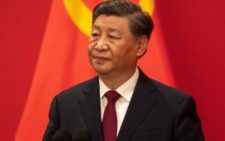Invest in mercury-free gold processing technology

Small-scale gold mining is big business in Kenya. But at the heart of artisanal and small-scale gold mining (ASGM) lies a dangerous neurotoxin: Mercury.
Globally, the ASGM sector is the largest contributor to mercury pollution, contaminating the air, water, and food of millions of people.
For Kenya, the problem begins with the importation of mercury for industrial use, which fuels its illegal diversion into gold mining through informal trade networks.
When mercury imported into Kenya enters the gold mining market through smuggling, the real cost is paid by miners and surrounding communities who face greater risks of neurological, reproductive and respiratory health problems upon exposure.
For pregnant women, the risks are even higher, as mercury can cross the placental barrier and directly affect the developing foetus.
Numerous studies have found that mercury used in small-scale gold mining is linked to serious health problems and physical symptoms among workers and people in surrounding communities, including tremors, loss of muscle coordination, memory problems, vision disorders, kidney dysfunction, respiratory problems, nausea, vomiting, and abdominal pain.
Mercury exposure is also linked to serious and often irreversible impacts on children’s brain development.
Several studies have documented high mercury concentrations in urine, nail and hair samples of miners in hotspot mining areas of Kakamega and Migori, a clear indication of mercury exposure.
In a study by CEJAD and IPEN in 2017, some 71 per cent of sampled women miners from Masara, Osiri and Mikei gold mining sites had very high levels of mercury in their hair.
Tackling mercury use in ASGM should be a public health necessity to protect the miners and communities around the mining areas from mercury poisoning. A crucial first step is to stop the importation of mercury into Kenya.
Elimination of global mercury trade requires a coordinated international effort to end the production, import, and export of mercury, particularly for its use in artisanal and small-scale gold mining.
This involves implementing commitments under the Minamata Convention on Mercury, which obligates countries to regulate mercury flows, reduce and, where feasible, eliminate mercury use, close primary mercury mines, and improve transparency through national reporting systems.
It also includes tightening customs procedures to detect and prevent illegal shipments.
This would be vital as these informal trade networks wouldn’t thrive if the mercury imports are stopped locally, regionally and at the global scale.
As a country, we should strive to eliminate mercury use in ASGM by 2032. The government should provide an enabling environment for investment in mercury-free gold processing technologies, such as gravity-based techniques like shaker tables and flotation to enable uptake by miners.
The writer is a Journalist and Communications Specialist at the Centre for Environment Justice and Development















